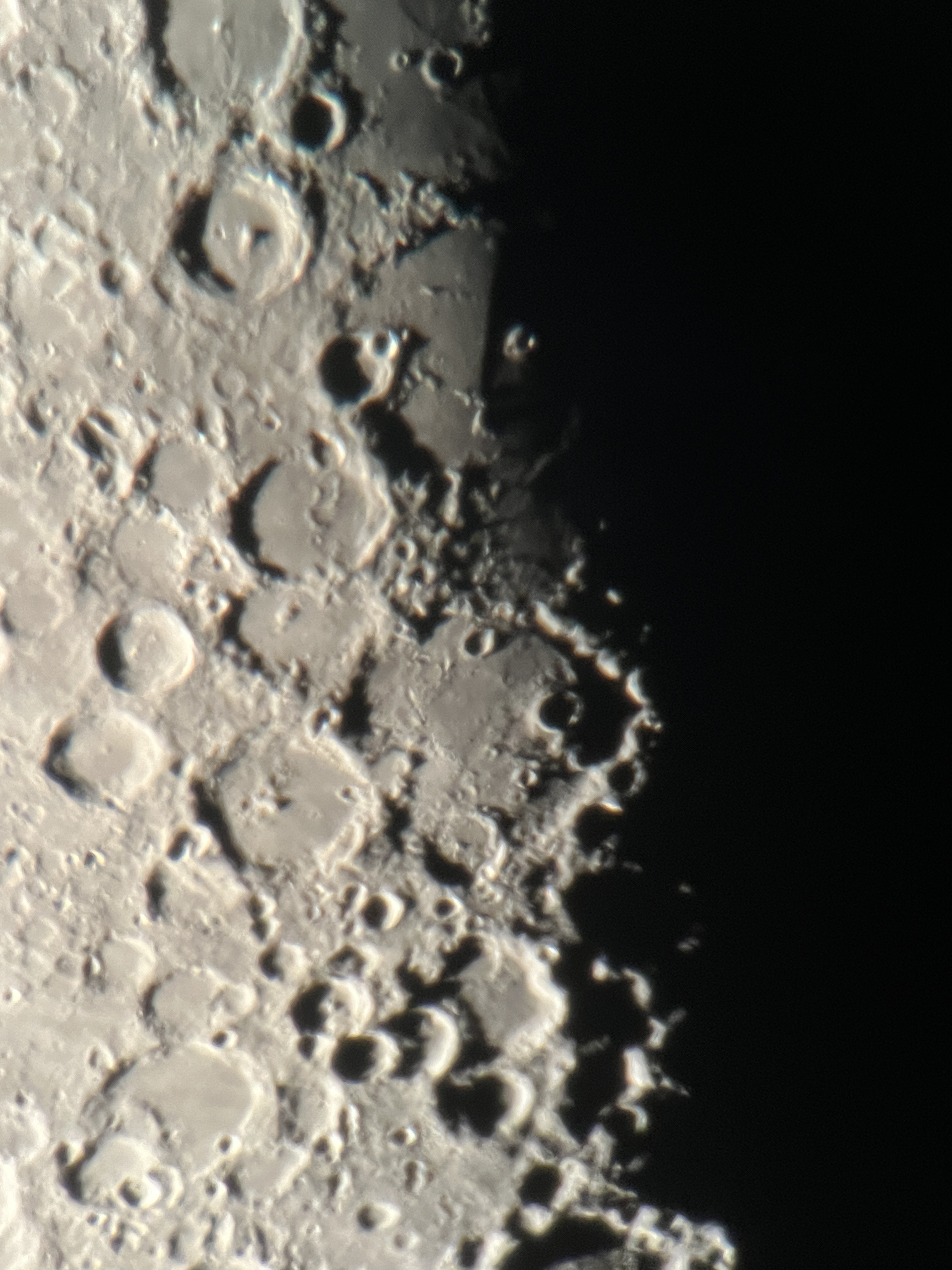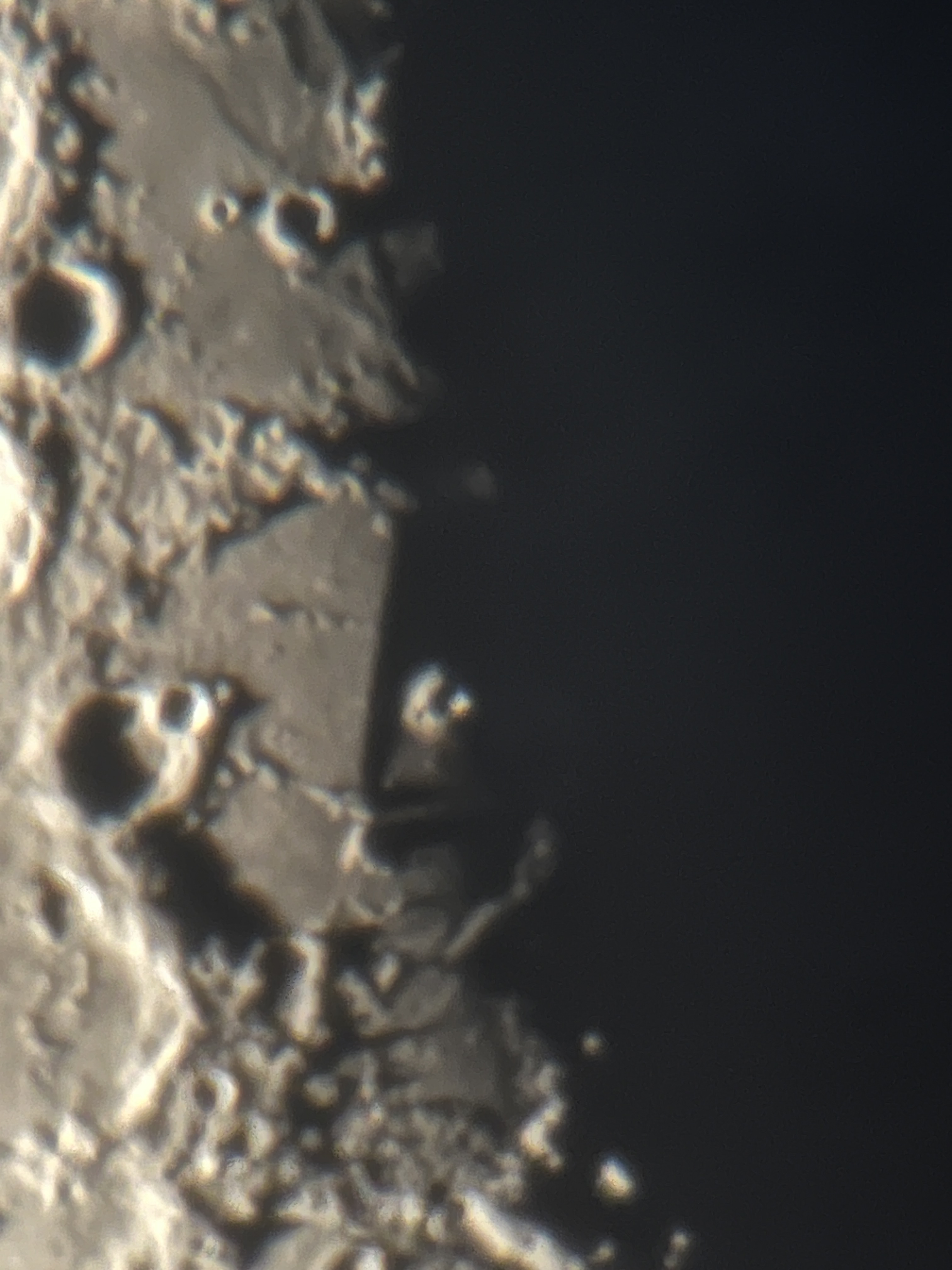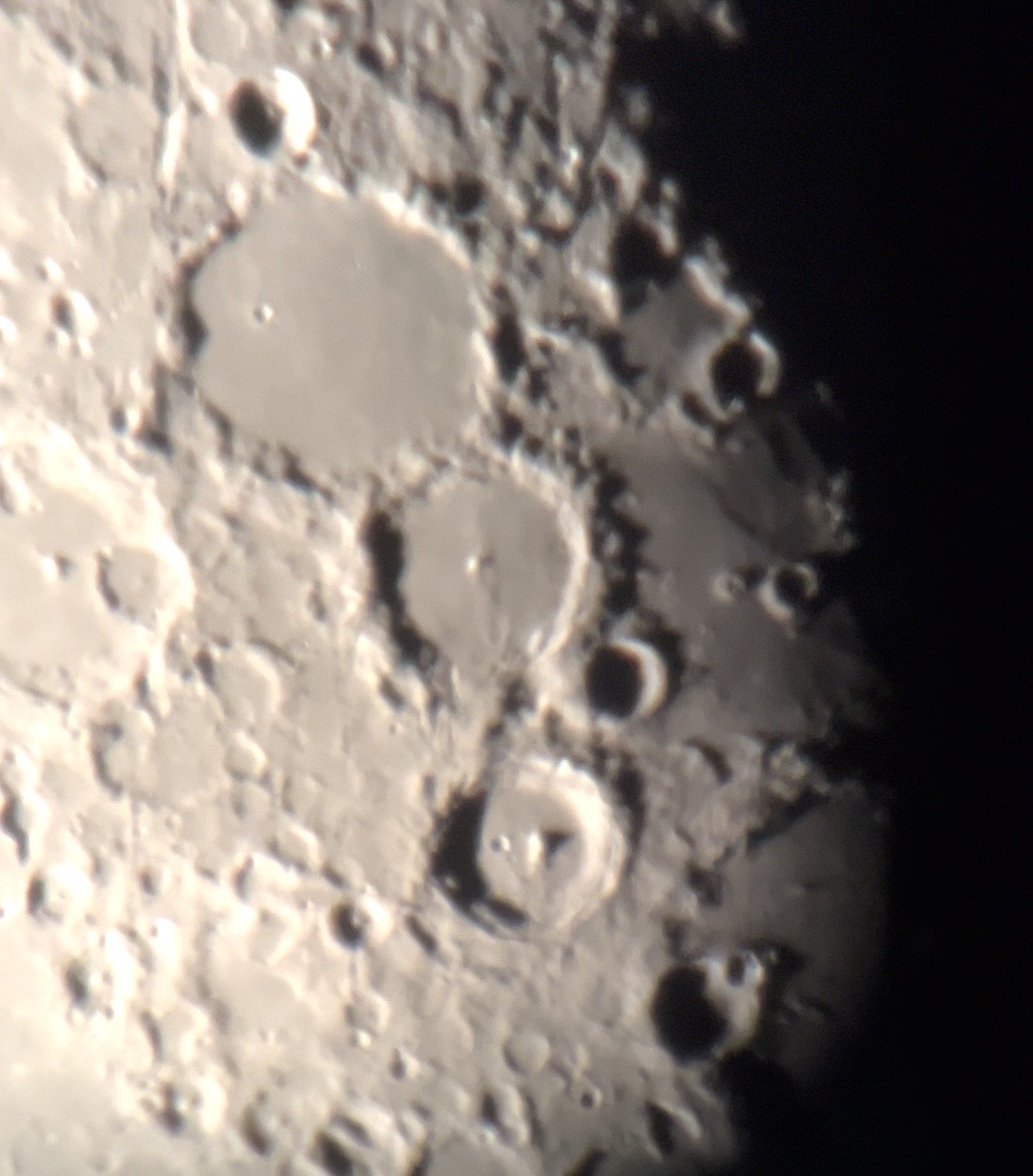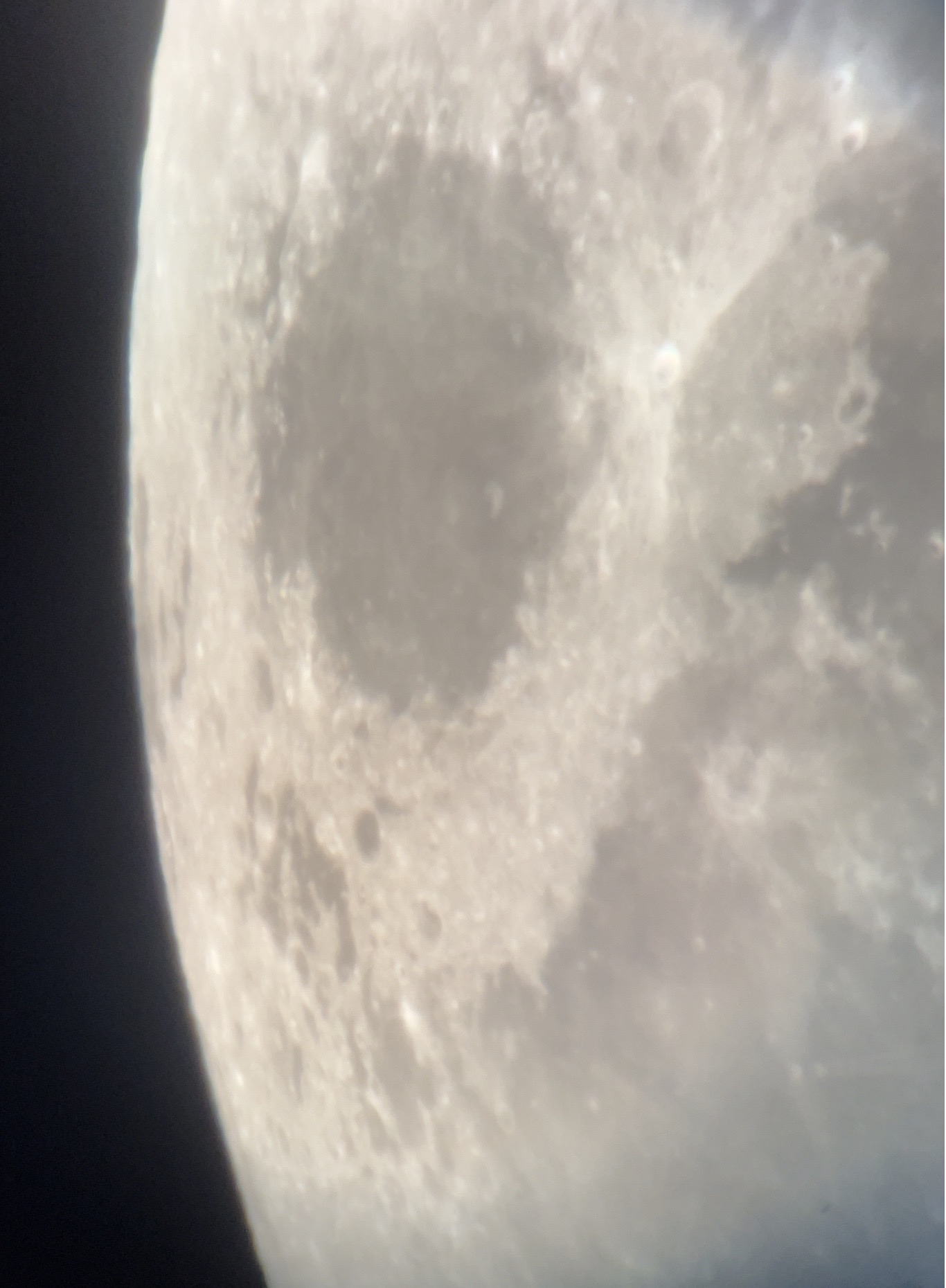Objects: Anaxagoras, Archytas, Birmingham, Challis & Math, Goldschmidt, Meton, Protagoras, Scoresby, W. Bond
IWLOP Objects: IWLOP #76: Goldschmidt
Location: Home
Date: 2024-06-14
Time: 9:00 PM - 10:15 PM
Equipment: 10" Meade SCT
Eyepiece: Tele Vue Nagler 9mm Japan eyepiece
Magnification: x278
Temperature: 20° C
Seeing: Fair (4)
Transparency: Good (3)
My goal for this session was to finally see all of the objects contained in IWLOP #76 - Goldschmidt and especially Anaxagoras. I had tried a month ago but was unsuccessful. Tonight there as success. For details of this observation, refer to IWLOP #076 - Goldschmidt.
Having found what I was looking for and completed the required and challenges for #76, I decided that given it was such a beautiful night I would stay out and get reacquainted with lunar craters that I haven't seen in a while. It was also just past 1st Quarter. The moon was illuminated 57.7% at this point so there may even be hope for Rupes Recta (Straight Wall) if all goes well.
 |
First up? Deslandres (Centre of photo) caught my eye. Its western rim was just on the terminator but you could see the features of its floor:
Below Delsandres is what I refer to as a mess of craters that over time had numerous hits:
If you follow the three craters lining up SW-NE above Miller, you come to Walther with its slightly off-centre peak and 4 aligned craters near the peak. This crater did impact Deslandres on its eastern rime. There is also an unnamed crater just inside its western rim. Above Walther is Regiomontanus with its now off-centre peak. Its southern rim is separated from Walther by rough terrain. Much of its northern rim was destroyed by Purbach's impact. There is a crater on its almost non-existent northern wall. Two ghost craters go southward through the middle. |
 |
Above Deslandres..... that's Rupes Recta aka the Straight Wall! As the absolute best example of a lunar fault, Rupes Recta casts a wide shadow that gives it the appearance of a steep cliff. The fault has a length of 110 km, a typical width of 2–3 km, and a height of 240–300 m. Although it appears to be a vertical cliff in the lunar surface, in actuality the grade of the slope is relatively shallow. Thebit (circular crater with most of its floor in darknesss in middle left), Thebit A with its highly illuminated rim, the small Thebit L beside A, the even smaller Thebit J nested beside Thebit, and Rupes Recta! Thebit A appears to have impacted both Thebit and Thebit L. The crater Birt is the illuminated crater in the shadows. Promontorium Taenarium was very large and well illuminated at the south end of the Wall; an intermittent ridge line ran from Thebit J to the south end of Rupes Recta, creating what looked like a break in the Wall just before the Promontorium. A few ghost craters appear on the Mare Nubium floor, suggesting inflow from volcanic action at some point. |
 |
At 10 o'clock to Thebit is Arzachel, one of a set of four on the Mare Nubium shores. The other three above it are Alpetragius, Alphonsus and Ptolemaeus. Arzachel has terraced walls; you can certainly see that on the lit side. It has a long central peak and the small Crater A is on its floor close to the peak and you can just make out an even smaller Crater K nearby. There is a rough outer rampart that joins a ridge running from the north rim to southern rim of Alphonsus. Note: Its floor is 1.5 km below that of Aphonsus's. Alpetragius is the small crater lying to the side between Arzachel and Alphonsus. The bowl of the crater is in darkness but its rim is well illuminated. Had the floor been lit, you would have seen the central peak that takes up about 1/3 of the floor; this has lead tot his crater being referred to as "egg in the nest". Alphonsus has a central peak. The outer walls are slightly distorted and possess a somewhat hexagonal form. The grooves seen on its floor are similar in appearance to those of Regiomontanus, and are thought to be due to Imbrium's ejecta gouging out the highest points of the terrain. Its southern rim has the rampart that joins it to Arzachel. Note: Its floor is 1 km below that of Ptolemaeus. Ptolemaeus is the largest of the craters in this chain. No central peak but it does have the named crater Ammonius on its floor. It has a low, irregular outer rim that is heavily worn and impacted with multiple smaller craters. The crater has a lava-flooded floor that under certain light shows ghost craters where lava covered pre-existing craters there. The small crater above Ptolemaeus is Herschel; you can see the top of the central peak in this deep round crater and hints of a terraced wall. You can also see the small Herschel G attached to the SW rim of Ptolemaeus. |
I then just started looking at the eastern limb of the Moon especially in the area of Mare Crisium. Lots to see!
 |
Mare Crisium (Sea of Crises) fills the central portion of this image. The craters in Crisium - Pierce and Picard - look like two eyes and, combined with Proclus and its ejecta rays, I see a bear's eyes, snout and nose. Proclus is thought to have hit the moon obliquely thus creating the ejecta rays towards Crisium and not Palus Somni, the rather grey fan-shaped area. On the limb at 9 o'clock is an oblique view of Mare Marginis (Sea of the Edge). Appropriately named given its location. At 5 o'clock to this is Mare Undarum (Sea of Waves). It's a shallow mare formed by the impact that created Crisium. The western part of Mare Undarum forms - with a little imagination - a footprint. Between this Mare and Crisium are three dark areas. From North to South these are the craters Condorcet, Firmicus and Apollonius. Signs of their "true" crater-ridden floors are long gone; their dark floors suggest lava filling. At 5 o'clock to Undarum is Mare Spumans (Foaming Sea). If you look closely at this image you will see a bright white spot on the mare shore. Interesting factoid: This bright area was known as landmark A-1/11(1.7981° N, 65.0741° E). Astronaut Michael Collins tracked this landmark on revolution 4 of Apollo 11. Collins referred to this crater as KAMP, after his three children and wife (Kate, Ann, Michael, and Patricia). Mare Fecunditatis (Sea of Fertility) fills the lower right of the image. Montes Secchi separate it from the Mare Tranquilitatis (Sea of Tranquility) above it. |
That was it for my reacquaintance session. Had fun doing this and re-identifying some really cool features.